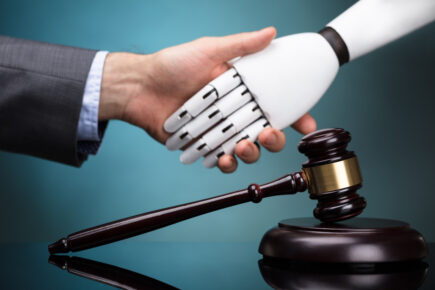The emergence of technology has had a radical impact on the existing intellectual property landscape. The new cascade of technologies has presented 3D printing, gene-editing, driverless cars and even “caring” robots. While it is difficult to fully understand the dimensions that can anticipate significant challenges for intellectual property administration, policy and governance, we can see new development challenges arising from the enormous differences in technological capacity.
On the other hand, every difficulty comes with opportunities as well. The technological developments creating challenges may not be adverse in themselves, but it is necessary to understand how these developments impact the existing intellectual property system and its future evolution. Disruptive technologies are changing people’s lifestyles and affecting traditional industries while the current legal system remains inadequate to address these changes, even though governments and experts have been working hard to tackle the issues.
The first industrial revolution came with the advent of steam engines, the second came with electricity and the third came with computers, electronics and automation, changing our lifestyles significantly. The fourth industrial revolution comes with disruptive technologies including 3D printing, robotics, artificial intelligence (AI), Internet of Things (IoT), big data and virtual reality (VR). While these technologies certainly make people’s lives easier and better, they also lead to many uncertainties as far as laws and regulations are concerned. The changes brought about by these technologies have been fast and massive in terms of volume, thus it becomes uncertain how to apply laws and regulations in this transformation phase.
The rise of 3D printing has attracted many controversies in recent years. Many consider this to be an era of mass customization where consumers can get products without tariffs and transportation costs. In contrast, others believe that the 3D printing potential will undermine the legal framework. In 2007, the price of the 3D printer fell below USD 10,000, and continues to fall, which has caused an unprecedented production of 3D printers. 3D printers also empower those who are otherwise not able to afford certain products owing to high costs.
However, 3D printing also challenges archaic laws based on different economic models, such as industrial production. 3D printing is a complex issue from a legal perspective because it can potentially infringe upon different intellectual property rights. For instance, if a person creates a design file for an iPhone case which is also used as a cardholder, there is a possibility that the case may infringe an existing patent protection. If that case is designed like a Montblanc wallet, it can also infringe a trademark for the brand’s logo and its copyright for design.[1]
Owing to these problems, the legal aspects of 3D printing are difficult to understand as they can cause conflict in the field of patents, designs, trademarks and copyrights. It should also be noted that products produced by 3D printers are considered to be more decorative in nature.[2] On the other hand, patented products are generally perceived to get protection due to their functional properties.[3] Therefore, the emerging technology of 3D printing can potentially affect patent protection. The Croc shoe and Anyway Up cup[4] can also be easily reproduced using 3D printers. 3D printing is a rapidly developing technology and even one 3D printer can make another 3D printer.
With the focus of innovation moving from industrial automation to interactive robotics, the use of interactive robotics is also increasing day by day in every field. Such breakthrough innovations indeed have the potential to disrupt the existing economic and social sectors. New interactive robotic devices and initiatives have been appearing in every industry, including consumer, defence, medical and services industries, and the growth of robotics can create intense competition in all sectors, that is why having good patent protection can create all the difference amongst competitors.
Robotics and artificial intelligence carry huge potential to transform various aspects of our lives.[5] Humanoid robots have been tried and tested in various supermarkets, hospitals and homes throughout Europe, USA and Japan. Lawyers, technologists and economists have also been speculating about the potential impact of robotics innovation within the social and economic sectors, with social scientists often focusing on the social influence of artificial companions. Hollywood movies such as Ex Machina and Her[6] show an imaginative vision of artificial intelligence, with human intelligence potentially becoming its rival. Owing to such possibilities, our understanding of intellectual property rights and other strategies remains incomplete.
Artificial Intelligence (AI) is one of the most important technologies of this era.[7] It has huge potential to serve humanity better in the fields of medical care, education, farming and transport. At the same time, it can pose certain challenges to the existing legal framework, especially patent law, even though patent law is often considered to be resilient towards technological changes. In this regard, the European Parliament has also issued a resolution and reports on issues concerning intellectual property.[8]
AI tools are already being used in computers, speech recognition software, virtual assistants like Siri, online games like chess, internet searches, cars and robots. AI is now also capable of producing original works which have historically been protected as ‘creative’ works eligible for copyright protection. Similarly, there are many success stories of AI performing complicated tasks independently such as composing musicals, proving mathematical theorems and turning computers into thinking machines like IBM’s Watson. IBM CEO, Ginni Rometty has predicted that 100 percent of jobs will be different owing to artificial intelligence.[9] Between 2013 and 2016, AI-related patent applications that mention machine learning have seen the highest growth rate. It is also easily foreseeable that AI will have an effect on intellectual property, particularly patent rights.
It is a tough dilemma for legislators to start thinking about strengthening IP law to protect right holders or keeping the law flexible to promote innovation. Intellectual property law is considered to be justified in protecting creative activity in the form of arts and sciences. Over time, the reforms in intellectual property law may be reviewed more comprehensively to meet the desired goals of the classification of objects of protection or the length or degree of protection necessary to balance all competing interests fairly in the context of a particular object. Still, intellectual property law should overall support new technologies instead of impeding their development.
First Published On “Courting The Law“
References
[1] Michael Rimock, ‘An Introduction to the Intellectual Property Law Implications of 3D Printing’ [2015]
[2] Marc Mimler, ‘3D Printing, the Internet and Patent Law – A History Repeating? ‘ La Rivista di Diritto Industriale [2013] Vol. 62 Issue. 6, 352-370
[3] Christopher Buccafusco & Mark A. Lemley, ‘Functionality Screens’ (2017). V.L.R.
[4] Haberman v Jackel International [1999] FSR 683
[5] C. Andrew Keisner, ‘Breakthrough technologies – robotics and IP’ [2016] WIPO
[6] Catherine Jewell, ‘Bringing AI to life’ [2018] WIPO
[7] Lauren Goode, ‘Google CEO Sundar Pichai compares impact of AI to electricity and fire’, The Verge (2018)
[8] Civil Law Rules on Robotics – European Parliament resolution [2017] with recommendations to the Commission on Civil Law Rules on Robotics (2015/2103(INL)), Eur. Parl. Doc. P8 TA 0051, at (2017)
[9] James Nurton, ‘The IP behind the AI boom’ WIPO (2019)







Leave A Comment